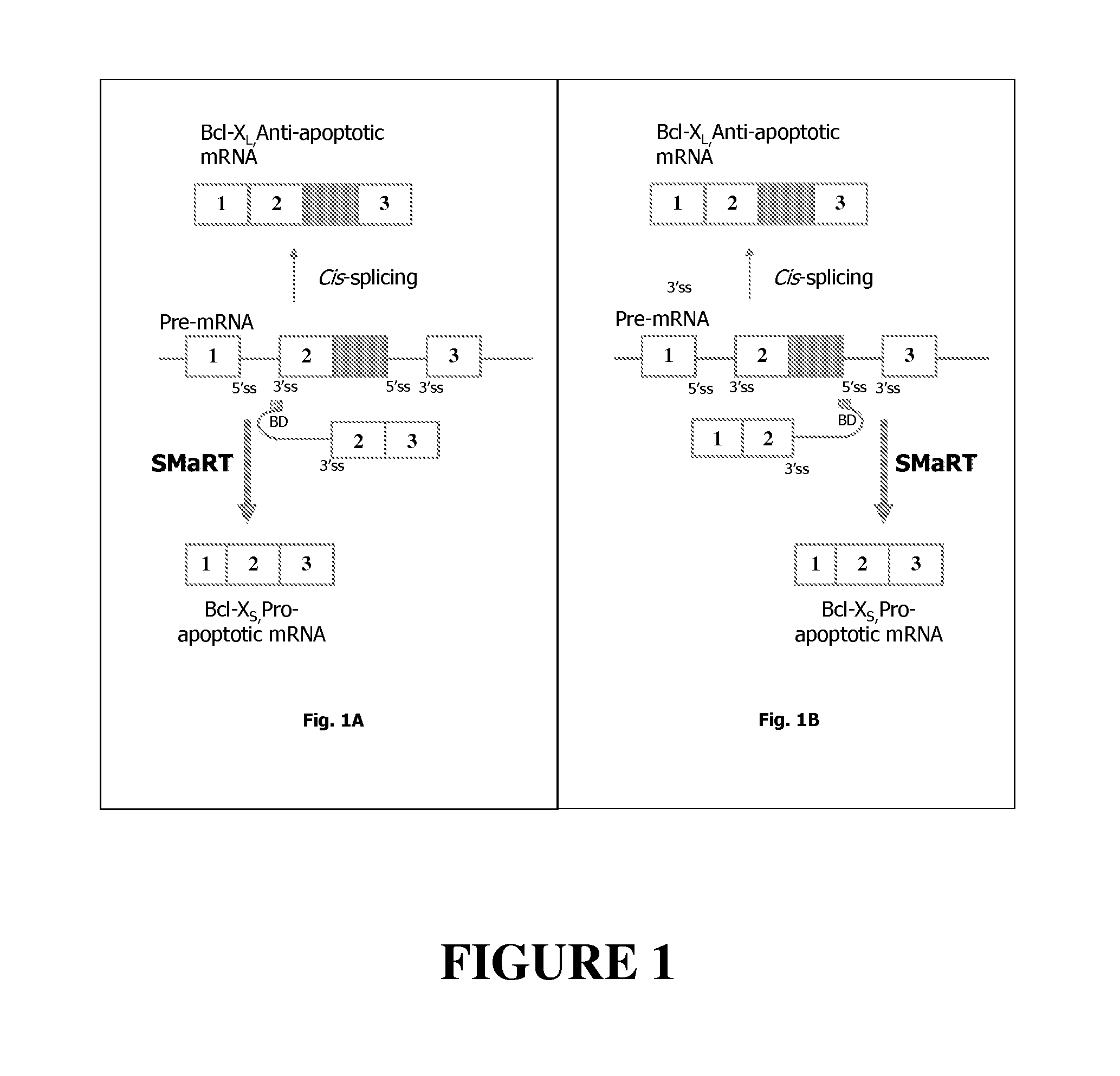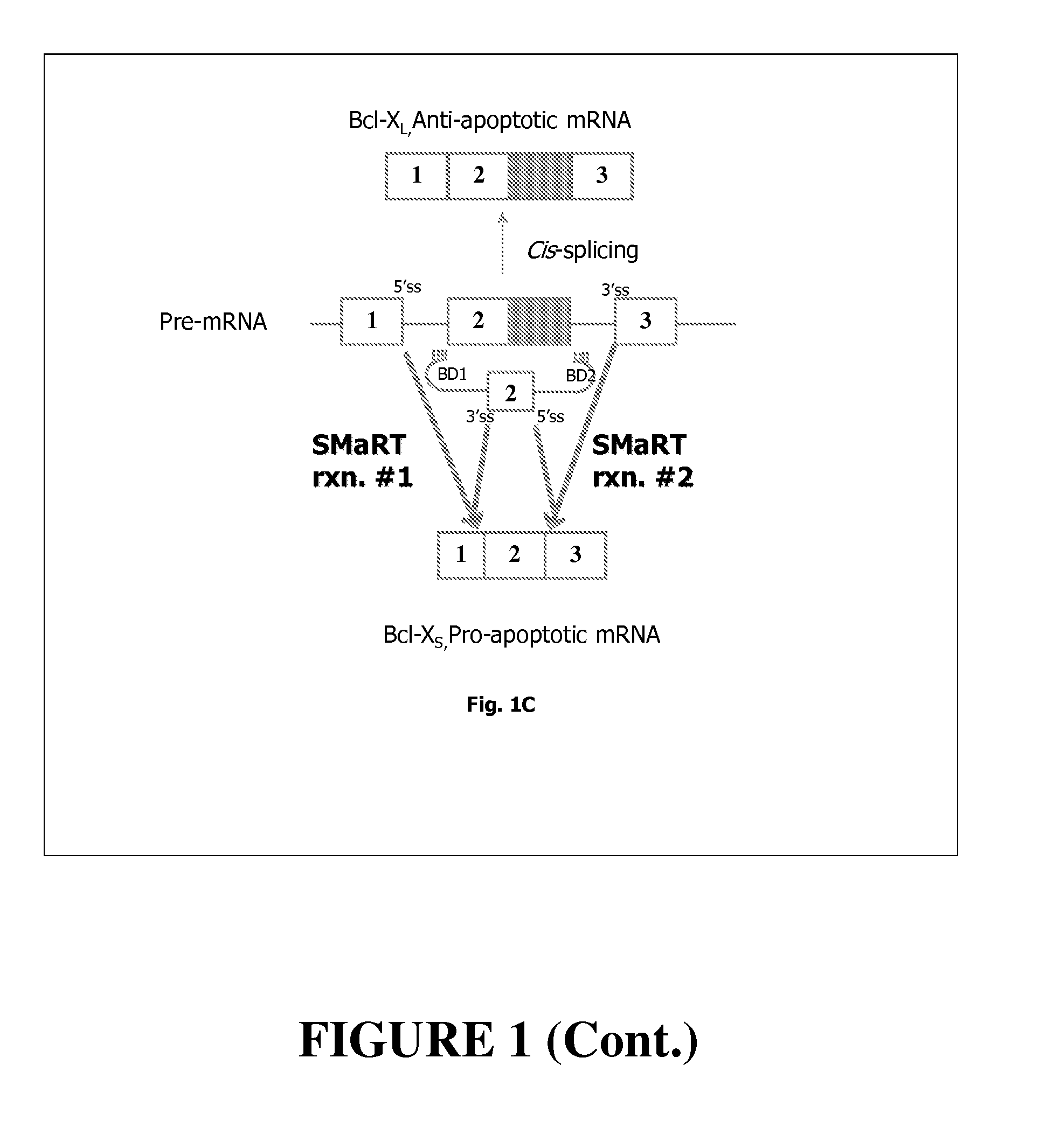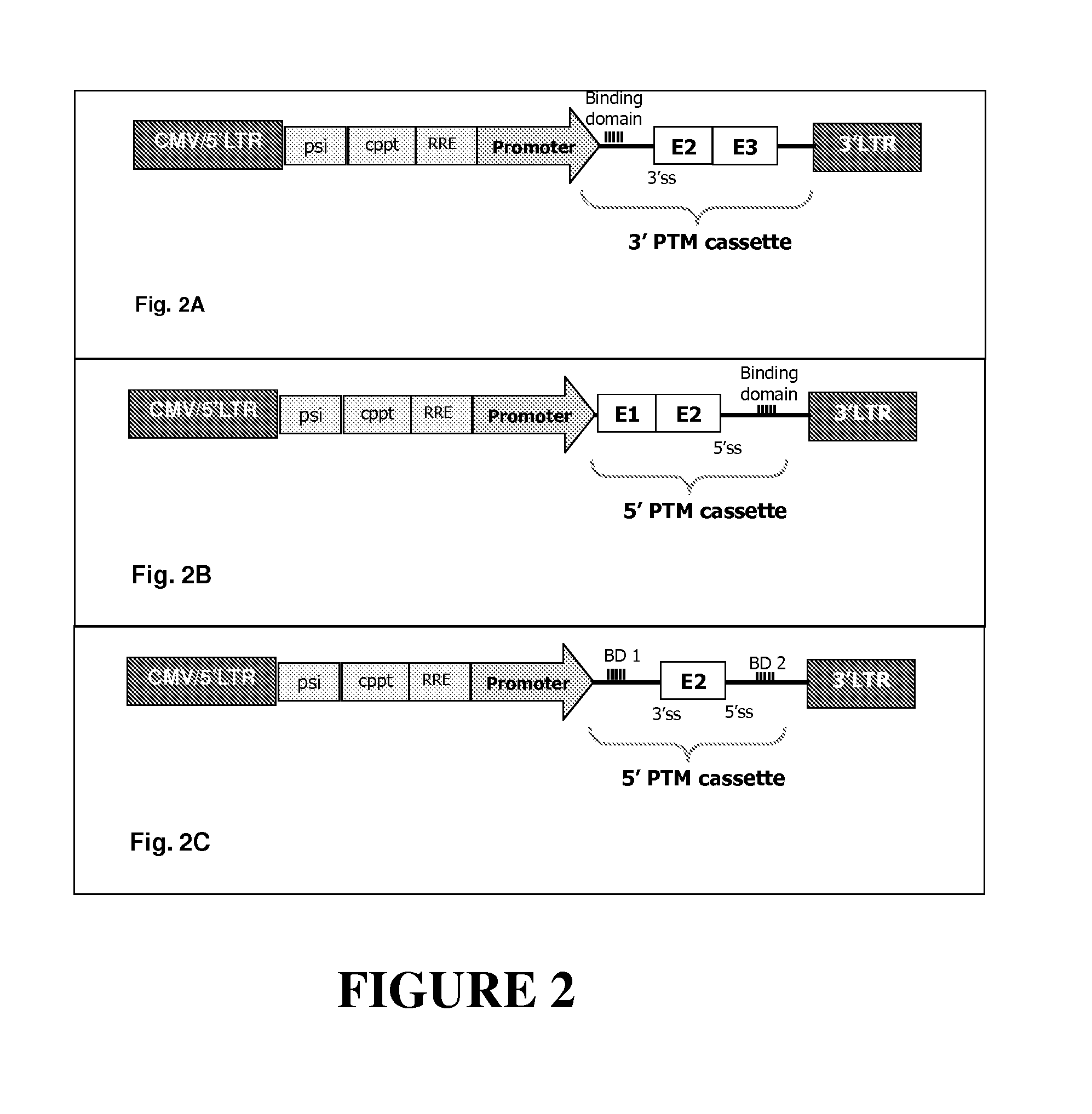Compositions and methods for inducing apoptosis
a technology of apoptosis and composition, applied in the field of compositions and methods for inducing apoptosis, can solve the problems of largely uncertain degree to which aberrant splicing is involved in carcinogenesis, how much is merely a reflection, and cannot predict which form would be expressed in different tissues, so as to reduce tumor load or tumor burden, and increase the sensitivity of cancer
- Summary
- Abstract
- Description
- Claims
- Application Information
AI Technical Summary
Benefits of technology
Problems solved by technology
Method used
Image
Examples
example 1
[0115]Spliceosome mediated RNA trans-splicing (SMaRT) is one of the few RNA-based technologies that can restrict the production of a protein of therapeutic interest to a specific cell type or organ. This example involves the alternate splicing of Bcl pre-mRNA. The Bcl case illustrates how differences in trans-acting elements affect crucial differences in splice variants. Bcl has two isoforms; one of these plays a critical role in human cancers. Imbalances in these two isoforms have been implicated in several human cancers by affecting apoptosis. The anti-apoptotic Bcl-XL is upregulated in several human cancers: multiple myeloma, small cell lung carcinoma, prostate and breast cancer, where it is specifically associated with an increased risk of metastasis. The pro-apoptotic Bcl-Xs is down regulated in transformed cells. However, forced over-expression of Bcl-XS sensitizes breast cancer cells to therapeutics.
[0116]In this example, SMaRT is used to convert Bcl-XL into Bcl-XS, thereby c...
example 2
[0119]This Example demonstrates the use of an LV vector expressing a PTM encoding a Bcl Xs apoptosis inducing splicing isoform to treat or ameliorate hepatic cancer in which the PTM expression is driven by a liver specific promoter.
[0120]While any of a number of vectors and methods may be used to express the PTMs expressing the apoptosis inducing splicing isoform, representative examples of vectors and methods of introduced the PTMs expressing the apoptosis inducing splicing isoform into the cells include, for example, and not by way of limitation, retroviral vectors, lentiviral vectors, adeno-associated viral vectors, adenoviral vectors, pox viral vectors, plasmid / minicircle vectors, viral vector transduction, electroporation, transformation, transduction, conjugation, transfection, infection, membrane fusion with cationic lipids, high-velocity bombardment with DNA-coated microprojectiles, incubation with calcium phosphate-DNA precipitate, or direct microinjection into single cells...
example 3
Cancer Therapy—Smart-Based Strategy
[0123]This Example demonstrates that the use of SMaRT to address mechanisms of splicing aberrations has the potential to open an entirely new field of therapeutic intervention. These include those cancers involving Bcl-XL: multiple myeloma, small cell lung cancer, prostate and breast cancer. In addition to Bcl pre-mRNA, targets exist for other splice isoforms involved in other human cancers. These splice isoforms including, for example, caspase 2, caspase 9, fas, HER-2, Rac-1, p53, KLF-6 and VEGF.
[0124]In particular, this Example demonstrates the specific targeting of the Bcl-XS splicing isoform to an abundantly expressed target mRNA so as to achieve a high level of expression, and thereby induce a more rapid and efficient state of apoptosis in the recipient cell.
[0125]In the human plasma proteome, the protein breakdown is a1-Antitrypsin (3.8%), a2-Macroglobulin (3.6%), Immunoglobulin A (3.4%), Transferrin (3.3%), Hp Type 2-1 (2.9%), IgM (1.98%), B...
PUM
| Property | Measurement | Unit |
|---|---|---|
| nucleic acid | aaaaa | aaaaa |
| size | aaaaa | aaaaa |
| length | aaaaa | aaaaa |
Abstract
Description
Claims
Application Information
 Login to View More
Login to View More - R&D
- Intellectual Property
- Life Sciences
- Materials
- Tech Scout
- Unparalleled Data Quality
- Higher Quality Content
- 60% Fewer Hallucinations
Browse by: Latest US Patents, China's latest patents, Technical Efficacy Thesaurus, Application Domain, Technology Topic, Popular Technical Reports.
© 2025 PatSnap. All rights reserved.Legal|Privacy policy|Modern Slavery Act Transparency Statement|Sitemap|About US| Contact US: help@patsnap.com



